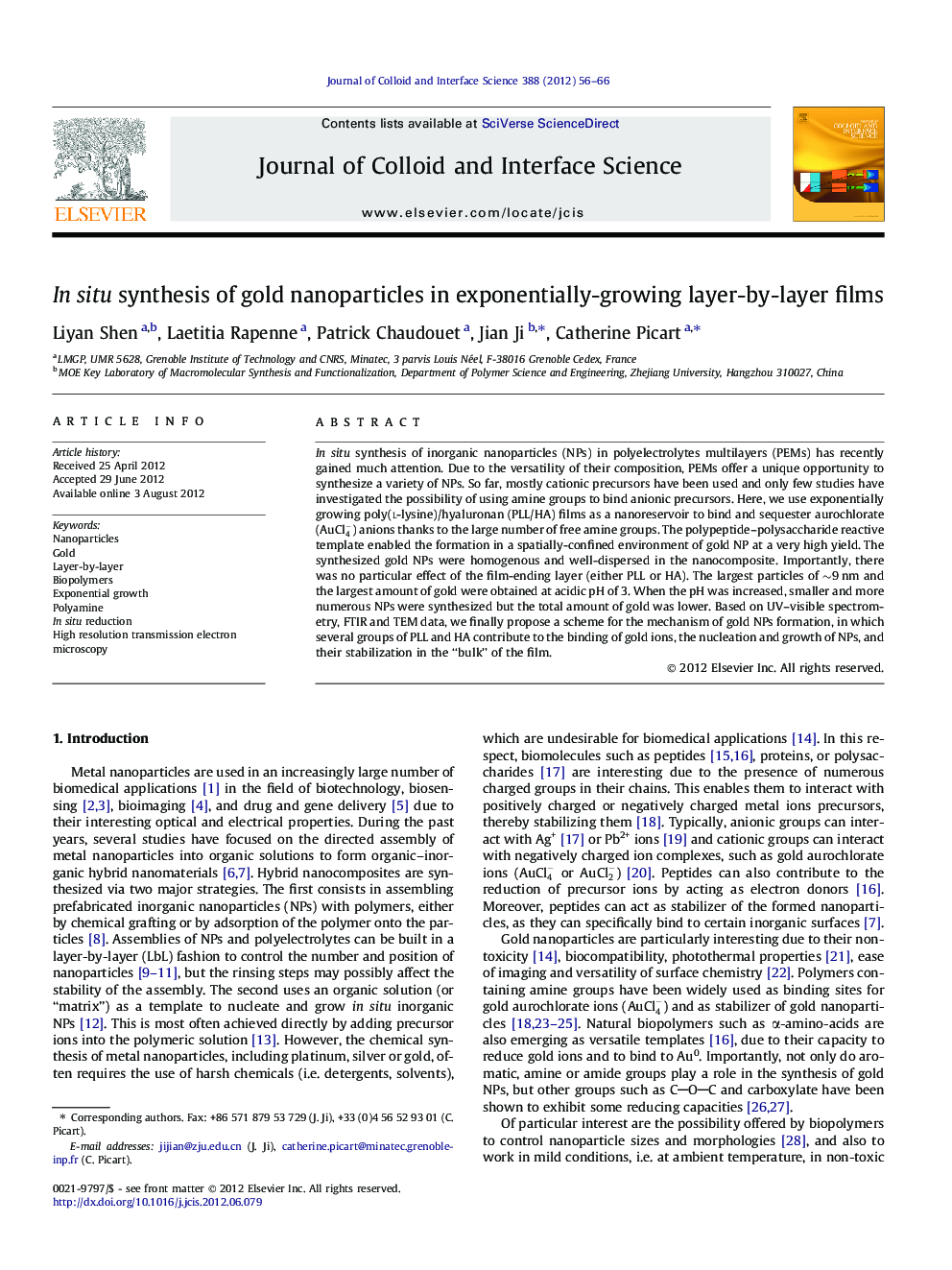| کد مقاله | کد نشریه | سال انتشار | مقاله انگلیسی | نسخه تمام متن |
|---|---|---|---|---|
| 607966 | 880565 | 2012 | 11 صفحه PDF | دانلود رایگان |

In situ synthesis of inorganic nanoparticles (NPs) in polyelectrolytes multilayers (PEMs) has recently gained much attention. Due to the versatility of their composition, PEMs offer a unique opportunity to synthesize a variety of NPs. So far, mostly cationic precursors have been used and only few studies have investigated the possibility of using amine groups to bind anionic precursors. Here, we use exponentially growing poly(l-lysine)/hyaluronan (PLL/HA) films as a nanoreservoir to bind and sequester aurochlorate (AuCl4-) anions thanks to the large number of free amine groups. The polypeptide–polysaccharide reactive template enabled the formation in a spatially-confined environment of gold NP at a very high yield. The synthesized gold NPs were homogenous and well-dispersed in the nanocomposite. Importantly, there was no particular effect of the film-ending layer (either PLL or HA). The largest particles of ∼9 nm and the largest amount of gold were obtained at acidic pH of 3. When the pH was increased, smaller and more numerous NPs were synthesized but the total amount of gold was lower. Based on UV–visible spectrometry, FTIR and TEM data, we finally propose a scheme for the mechanism of gold NPs formation, in which several groups of PLL and HA contribute to the binding of gold ions, the nucleation and growth of NPs, and their stabilization in the “bulk” of the film.
Figure optionsDownload high-quality image (90 K)Download as PowerPoint slideHighlights
► Poly(l-lysine)/hyaluronan (PLL/HA) films as nanoreservoir for aurochlorate anions.
► In situ, synthesis of gold nanoparticles (NPs) in a spatially-confined environment.
► Tunable size of gold NP from ∼2 nm to ∼9 nm, depending on the loading pH.
► Importance of specific functional groups revealed by FTIR spectroscopy.
► A scheme for the mechanism of gold NPs formation is proposed.
Journal: Journal of Colloid and Interface Science - Volume 388, Issue 1, 15 December 2012, Pages 56–66